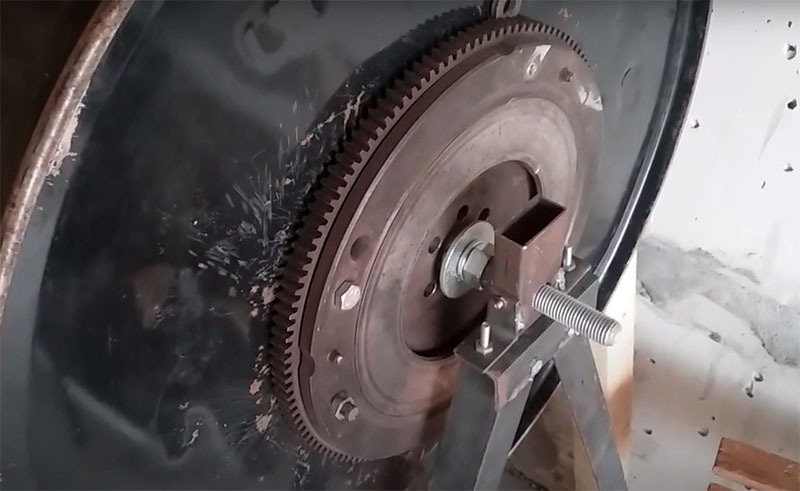Contents:
- Basic rules for
- How to store boots with high bootlegs?
- Features of storage of rubber and marsh boots
After the end of the period of socks, the owners have to think out what to do with the shoes so that it does not take up much space, while retaining its attractiveness and functionality until next season. As practice shows, very few know how to store high boots, as well as rubber products or their marsh analogs.
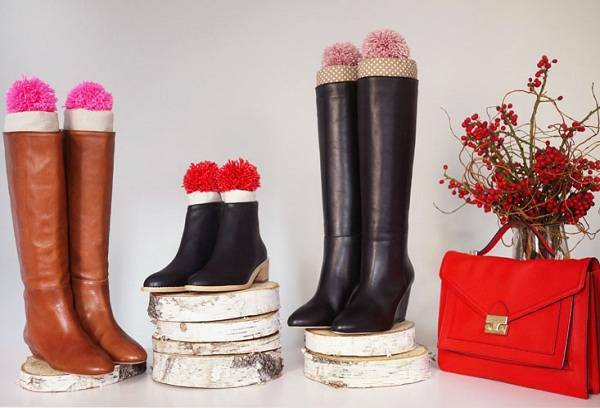
As a result, shoes are covered with cracks, cracks, and sometimes even mold marks. They quickly become unusable, therefore, by the beginning of the season, the wardrobe has to be urgently updated. But if everything is done correctly, there will be no such problems. In this case, the preliminary preparation and proper arrangement of shoes for the summer does not take much time, do not require large energy costs.
Basic rules of
Before you remove the boots for summer storage, they must be properly prepared. This rule applies to all models without exception, even rubber and marsh - such unpretentious in appearance. Depending on the type of material and the features of the products, the following manipulations should be performed:
- Any boots must first be thoroughly cleaned from dirt, dust, reagents. Not only the decorative surface of the products is processed, but also their sole. It is forbidden to use metal graters or hard brushes, they easily damage any surfaces.
- Suede and velor is recommended to handle special brushes made of wire. And rubbing off such surfaces can be removed if rubbed with fine-grained sandpaper, then hold for a few seconds over the steam jet.
- So popular today high suede boots in just one season, socks lose their appeal. Do not think that in the summer or before the beginning of the next season, you can fix it, it's best to do it all at once. You just need to prepare a weak vinegar solution, wipe them with products and thoroughly dry.
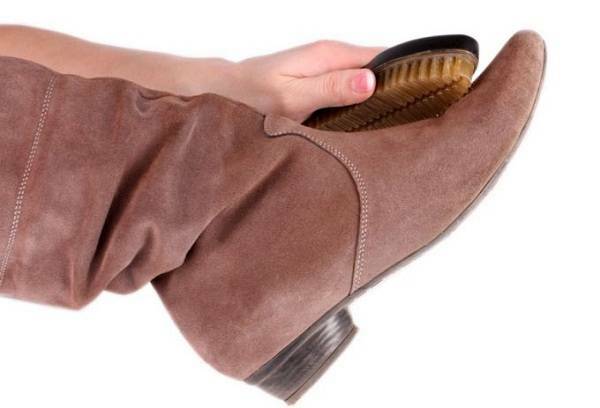
- Swamp boots and products that have been subjected to prolonged wear are strongly impregnated afterwards, even if at first it is not obvious. Such shoes should be disinfected before cleaning. To do this, we prepare a pale pink solution of potassium permanganate, which gently treat all the inner surfaces of the boots. Not bad with the smell of sweat and 3% hydrogen peroxide.
- After all preliminary processing steps have been carried out, the products must be dried. For this purpose, it is best to use well-ventilated rooms or a balcony with fresh air. Attempts to speed up the process using artificial heat sources will not lead to anything good. Swamp and rubber boots from this effect can generally lose weight.
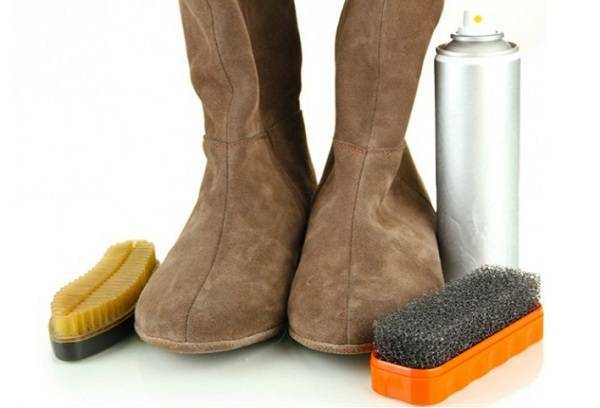
It remains only to choose a place in which you can store boots in the summer. And this will already depend on the purpose of shoes, the features of its material and design.
How to store boots with high bootlegs?
In this case, you need not only to choose the best place for storing boots, but also to organize everything correctly. Only in this case, capricious products will not be covered with creases, folds, scuffs.
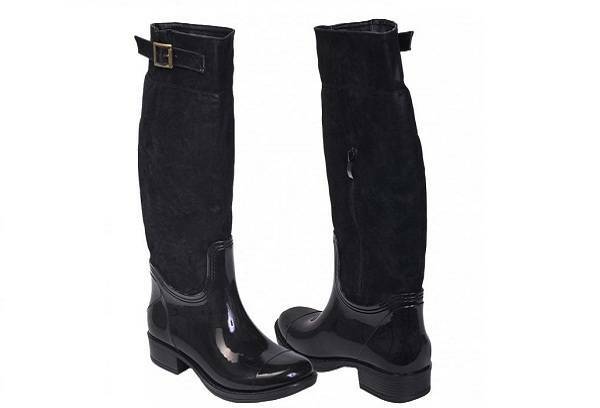
The following recommendations can be adopted:
- Old, but effective variant with newspapers. Just do not just poke the paper in your boots, it's better to roll out of it bulky balls the size of a fist. They will allow to maintain the form of products, absorb all the excess moisture, do not stretch the material. If there is such a possibility, it is recommended to update the filler every 3-4 months, keeping track of the condition of the footwear.
Advice: It is not to be hoped that the cardboard inserts accompanying the boots during the sale will allow to keep the shape of the products during the summer months. Already after one season of active socks the models will noticeably stretch and these tabs in them will simply drown, not fulfilling their purpose. Therefore, you need to take care of the selection of an appropriate option in advance.
- If in one of the cabinets there is enough space, then the favorite pairs of boots are better to hang by using profile store or homemade hangers. The plastic part, resembling the leg of a dummy, is inserted into the boot, which is fastened. A hook clings to any transverse crossbar.

- In extreme cases, you can use and hangers for trousers, consisting of two wooden bars, which clamps the top of the product. To prevent dents from forming on the surface of the boots, you must place a strip of thin foam or fabric under the crossbar.
- Finally, inflatable and plastic fillers provide the required degree of shaft fixation. True, there are several negative aspects in their use. Plastic has a specific smell, which is transmitted to the skin and suede. Someone does not even notice, and some then can not wear such boots. Inflatable elements after a while start to be deflated, so they need to be replaced or pumped. And if something heavy falls on such fillers, then they can burst with a rather loud sound.
It turns out that the main thing when storing high boots is the prevention of creases. In no event can you just fold up your boots, bending your bootleg and putting it in the box. Even the natural skin, so impervious to external influences, can not maintain this original texture with this approach.
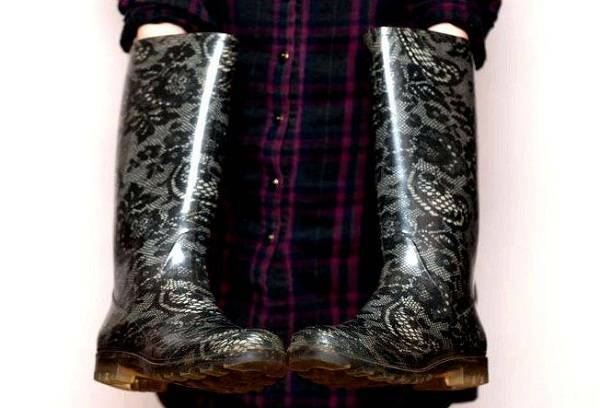
Features of storage of rubber and marsh boots
Many mistresses continue to store marsh and rubber boots as it is necessary, even if they already had to get rid of several spoiled pairs. In fact, in creating conditions suitable for specific products, there is nothing complicated. You only need to observe the following rules:
- For drying, you need to spend at least 2-3 days. It seems that these materials do not get wet, or dry very quickly, but it's not. Only after a couple of days of staying in the open air do they really get rid of all the excess moisture.
- Do not put rubber products under direct sunlight or near artificial heat sources. From this material will dry up, crack, may even burst.
- These models can not be laid, they must be kept in a vertical position, otherwise the inside of the shoe can be covered with mold colonies. If the bootlegs are soft, then the products need to be filled with crumpled newspaper balls, which again are recommended to be replaced every 3-4 months.
- Despite the fact that marsh boots are usually very high, they can only be stored in a straightened form. It is best to hang them in some cool, but ventilated room. If there is such an opportunity, then they do not need to be bent in any part. When it is impossible to create such conditions, the most gentle kind of laying is allowed. But in this case they will have to be got every month and hung out for several hours in fresh air in a straightened state.
- The quality of the material will remain at a proper level for a long time if, before storage, the outer part is smeared with a small amount of glycerin, and the inner part should be poured with cosmetic powder, baby powder or talc.
- The optimum storage temperature for these items is 5-15 ° C, with a humidity of 40 to 60%.Nearby there should not be containers with kerosene or oil. In the cold, the rubber surface may crack.
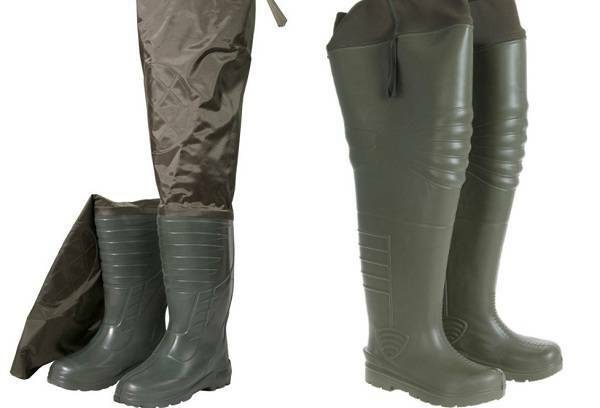
All these manipulations only seem troublesome and time-consuming. In fact, the entire process, involving active action, takes no more than half an hour. But the final result speaks for itself. Products that are stored in compliance with the above rules, retain their functionality and attractiveness for a long time, do not settle down and do not stretch in the most unsuitable places.

